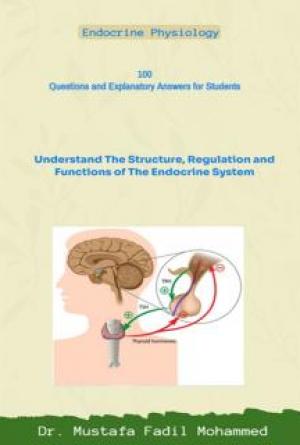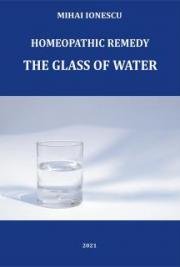What Do I Think Now? Ask students to agree or disagree with each statement as they did earlier.
2. After students have completed Master 6.3, give each student the copy of Master 1.1, Alcohol: Is This Right? , that he or she completed during Lesson 1.
3. Display an overhead transparency of Master 6.4, Alcohol: Is
This Right? Class Responses. For each statement, write on the transparency how many students agreed with it at the start of the module.
4. For each statement, ask how many agree with it now. Write these numbers on the transparency in the spaces provided.
5. Ask the class whether they changed their minds about any of the statements about alcohol. If so, which ones?
Answers will vary, though most students will change their minds about some of the statements.
6. If students changed their minds about some of the statements, why did they do so?
Allow students to share their thoughts with the class or ask questions about the statements. Encourage students to provide specific examples from the activities in this module to explain their thinking.
If students cannot reach a consensus about a statement, refer them to the outcomes of specific activities.
Use the following information about the statements to guide the discussion:
182
1. Alcohol is a stimulant.
Alcohol is actually a depressant. It can appear to be a stimulant because it initially depresses the part of the brain that controls inhibitions.
2. Caffeine will sober you up.
Caffeine will not help an individual become sober more quickly. The factors that influence a person’s BAC include the amount of alcohol consumed, the pattern of drinking, body weight, and gender. Only time will reduce the BAC as the body breaks down the alcohol.
3. Food will keep you from becoming intoxicated.
Food in the stomach causes alcohol to be absorbed more slowly than when the stomach is empty. Food can delay the effects of alcohol, but it cannot eliminate them.
4. Drinking beer is safer than drinking wine or hard liquor, such as
vodka or whiskey.
The type of drink is not an important factor when considering the effects of drinking alcohol. As students learned in Lesson 2, 12
ounces of beer contain the same amount of alcohol as 5 ounces of wine, or 1.5 ounces of hard liquor.
5. Alcohol-related car crashes are all caused by drunk drivers.
Most alcohol-related car crashes are caused by drivers with BACs over the legal limit. However, as seen in Master 6.2, Alcohol Information Sheets, drivers with BACs less than the legal limit also have crash rates higher than nondrinkers. Also, as presented on Master 5.4, Progressive Effects of Alcohol, BACs below the legal limit produce impairments.
6. Alcoholism is a disease.
Alcoholism is a chronic disease involving a strong craving for alcohol, a constant or periodic reliance on use of alcohol despite adverse consequences, the inability to limit drinking, physical illness when drinking is stopped, and the need for increasing amounts of alcohol in order to feel its effects.
183
Student Lesson 6
Understanding Alcohol: Investigations into Biology and Behavior
7. Alcohol abuse and alcoholism affect only the abuser.
Unfortunately, alcohol abuse and alcoholism affect other individuals in addition to the abuser. For example, the abuser’s family and friends are affected. Alcohol abuse leads to missed work, thereby affecting coworkers. Abusers are also more likely to engage in risky behaviors that can lead to accidents and even criminal behaviors that produce victims.
8. Alcohol abuse or alcoholism will never be my problem.
As students learned in Lesson 4, many factors influence whether a person uses alcohol, abuses alcohol, or becomes an alcoholic. Some factors are genetic, many others are environmental, but the primary factor is personal choice.
9. Nothing can be done about alcohol abuse or alcoholism.
Alcohol abuse and alcoholism can be treated effectively using medications and psychosocial (behavioral) therapies. Currently, there is no cure for alcoholism.
10. It is a good idea to drink alcohol to prevent heart disease.
Studies have shown that alcohol in moderate amounts (about one drink per day) can reduce the risk for heart disease. However, in larger amounts, alcohol makes heart disease worse and can actually interfere with the rhythm of the heart. Doctors do not recommend that nondrinkers start drinking alcohol in an effort to prevent heart disease. There are many people who should not drink even one
drink per day, including pregnant women, recovering alcoholics, and people taking certain medications.
11. Drinking a large amount of alcohol occasionally is less harmful than
drinking a smaller amount every day.
Binge drinking can cause severe problems. Drinking a large amount of alcohol at one time can raise the BAC to such a dangerous level that the individual can lose consciousness and even die. However, even at lower levels, alcohol makes it more likely that a person will engage in risky behaviors with potentially serious consequences.
Lessons 5 and 6 should help students understand the consequences of consuming alcohol.
184
12. Drinking alcohol makes you feel more confident.
The effects of alcohol at a BAC between 0.01 and 0.05 include the loss of inhibitions and a sense of well being. When the BAC
increases to between 0.06 and 0.20, some individuals become more boisterous and extroverted. These behaviors can be interpreted as confidence. However, the behavioral changes caused by alcohol consumption can vary greatly depending on the amount consumed and the individual’s response. At high BAC levels, some individuals experience severe emotional swings.
185
Student Lesson 6
Understanding Alcohol: Investigations into Biology and Behavior Lesson 6 Organizer
Activity 1: Alcohol Risks and Consequences
What the Teacher Does
Procedure Reference
Ask the class why the legal BAC for driving is set where it is.
Page 179
• Is it true that alcohol consumption is safe as long as the
Step 1
BAC stays below the legal limit?
• Is it true that activities other than driving are safe,
regardless of a person’s BAC?
Ask the class whether there should be a legal BAC for all
Page 179
activities (not just driving) when a person is in public.
Step 2
Write the following series of BAC numbers on the board:
Page 179
0.00, 0.02, 0.04, 0.06, 0.08, and 0.10.
Step 3
• Have students stand in front of the BAC that they feel
should be the legal BAC for all public activities.
Divide the class into student teams and instruct them to
Pages 179–180
write a brief justification of their position.
Steps 4–6
• Discuss Master 6.1, Issues to Think About.
• Pass out Master 6.2, Alcohol Information Sheets.
Allow student teams to share their justifications with their
Page 181
classmates and encourage questions of the presenters.
Step 7
= Involves using a transparency.
= Involves copying a master.
186
Ask the class to consider the implications of setting such
Pages 181–182
BAC limits.
Step 8
• Does a person know their BAC after they consume
alcohol?
• Is there a significant difference in a person’s mental or
physical impairment between a BAC of 0.06 and 0.08?
Between 0.04 and 0.06?
• Will a person with a BAC of 0.08 always be more
affected than a person whose BAC is 0.06?
Activity 2: How Much Have You Learned about Alcohol?
What the Teacher Does
Procedure Reference
Pass out to each student a copy of Master 6.3, Alcohol: Is Page 182
This Right? What Do I Think Now? Ask students to agree or Step 1
disagree with the statements.
Return Master 1.1 to the students so they can review their
Page 182
responses made during Lesson 1.
Step 2
Display a transparency of Master 6.4, Alcohol: Is This Right?
Page 182
Class Responses.
Steps 3 and 4
• Record the number of students who agreed with each
statement at the beginning of the module.
• Record the number of students who agree with each
statement now.
Ask students if they changed their minds about any of the
Pages 182–185
statements. If they have, ask them to explain their reasons.
Steps 5 and 6
187
Student Lesson 6
Issues to Think About
• The effect of alcohol on a person’s physical abilities
• The effect of alcohol on a person’s mental abilities
• The effect of alcohol on a person’s risk of injury
• The effect of alcohol on the risk of injury to other people
• Positive effects of alcohol on a person or on society
• Economic costs or benefits of alcohol to an individual or
to society
Master 6.1
Alcohol Information Sheets
TYPES OF ALCOHOLS
Alcohols are a useful class of chemical compounds. The most common alcohols that we encounter in daily life are methanol (also called wood alcohol), isopropanol (rubbing alcohol), and ethanol (or ethyl alcohol). Of these three, only ethanol is safe to drink. Other alcohols are poisons. When the word alcohol is used in association with beverages, it always refers to ethanol.
Alcohols, including ethanol, are used by the chemical industry in many ways. Methanol is used as antifreeze, and isopropanol is the main ingredient of rubbing alcohol. Ethanol has many uses in addition to being a beverage ingredient. It is used as an alternative fuel source and as a solvent for other chemicals, including some medicines. For example, some types of cough syrup have ethanol concentrations similar to those found in hard liquor.
Master 6.2a
Alcohol Information Sheets
ALCOHOL AND SOCIETY
Adults drink alcoholic beverages for many reasons—to celebrate holidays, to celebrate good times, as an emotional release, and for cultural and religious reasons. The movies, television, and advertisements often promote alcohol as an almost required part of a happy and successful lifestyle.
Most adults who drink alcohol do so responsibly. However, the time and place where alcoholic beverages are consumed are important in determining how appropriate the drinking is. In the United States, it is common for people to drink at parties. For many people, BACs in the range of 0.01–0.05 help them feel more relaxed and friendly. At parties, drinking alcohol is acceptable, as long as guests don’t drink too much. In other settings, drinking alcohol is a serious problem. For example, drinking and then driving a car can lead to crashes, and drinking at work can lead to serious accidents. Drinking alcohol while taking certain medications can produce serious health problems and even death.
Different cultures view drinking alcohol differently. Some cultures prohibit drinking altogether, while others include it as part of everyday living. In some countries, many people who drink do so with the intention of becoming intoxicated. Not surprisingly, different countries have different laws about the use of alcohol. The chart below lists the legal drinking age and legal BAC limit for driving in various countries.
Country
Minimum drinking age
Legal BAC limit for driving
Australia 18
0.05
Austria
16 for beer and wine,
0.05
18 for all types
0.01 for new drivers
Belgium
15
0.05
Canada
18–19 (depending on province)
0.08
Denmark
18
0.05
England
18
0.05
France
16
0.05
Germany
16 for beer and wine,
0.05
18 for all types
Italy 16
0.08
Japan
20
0.03
Russia
18
0.02
Spain 16
0.03–0.05
(depending on type of vehicle)
Sweden
18 for certain beers,
0.02–0.05
20 for all types
(depending on type of vehicle)
Master 6.2b
Alcohol Information Sheets
ALCOHOL’S EFFECTS ON THE BRAIN
The brain, with its high water content, is very sensitive to the effects of alcohol. Low BAC levels affect a part of the brain called the cerebral cortex, producing a sense of relaxation and well being. People who drink moderate amounts of alcohol may have problems with certain mental activities, such as those involved with getting, storing, and using information. These effects can cause problems in school for young people and at work for adults.
At higher BACs, additional parts of the brain become affected, resulting in changes in feelings and personality as well as impaired activities. People who drink heavily and for a long time often show evidence of brain damage. If an alcoholic stops using alcohol, some brain damage can be reversed. Master 5.4, Progressive Effects of Alcohol, lists how increasing BACs affect the brain and describes the effects.
The effects of alcohol are not limited to the brains of those who drink but also extend to the developing brains of fetuses. Pregnant women who drink expose their unborn children to alcohol when it passes through the placenta. This exposure can lead to a birth defect known as fetal alcohol syndrome (FAS).
Children born with FAS have a number of symptoms including mental retardation, developmental delays, and behavioral problems.
Animal studies have been used to understand how alcohol exposure causes FAS. If drinking occurs during the time when the developing brain is growing the fastest, then FAS is more likely to occur. A recent study suggested that a single exposure to high alcohol concentrations is enough to cause FAS in rats. Healthcare providers should warn pregnant women not to drink any alcohol during their pregnancy or if they are planning to become pregnant.
Master 6.2c
Alcohol Information Sheets
ALCOHOL’S EFFECTS ON THE BODY
Alcohol and the Heart
Drinking alcohol affects the functioning of the heart and circulatory system. Studies have shown that small amounts of alcohol (about one drink per day for a woman and two drinks per day for a man) can reduce the risk of heart disease. The reason for this protective effect is not understood. Doctors do not recommend that nondrinkers start drinking to reduce their risk for heart disease, however; even moderate drinking increases the risk for other alcohol-related problems, including other medical problems, accidents, violence, and other risky behaviors. There is no question that heavy drinking is bad for the heart. It can damage heart tissue, produce an irregular heartbeat, and increase the risk of stroke.
Alcohol and the Liver
The liver is critical to our health. It helps break down food during digestion and processes waste so it can be excreted from the body. It also helps make needed substances such as cholesterol. Heavy drinking is often associated with liver damage. The liver is the main organ where alcohol is metabolized, or broken down, into different chemicals that can be passed out of the body. Some of these breakdown products are toxic to the liver. If these toxic substances build up in the liver, alcohol-induced liver damage can result. Women develop liver disease after a shorter time and with less alcohol exposure than men do.
Alcohol and the Digestive System
Heavy drinking can stop the esophagus from contracting and helping move food to the stomach. This allows stomach acids to back up into the esophagus. Stomach acid in the esophagus causes an inflammation of the cells, which can progress to esophageal cancer. Heavy alcohol use also is associated with inflammation of the pancreas and cancers in other body parts, including the mouth, throat, breast, colon, and rectum. Alcohol consumption apparently does not cause stomach cancer, but it may be involved in gastritis (inflammation of the stomach).
Alcoholics often have poor diets, so they don’t get enough essential nutrients. Alcohol also interferes with the body’s ability to break down food and absorb nutrients such as vitamins. Vitamin deficiencies can lead to other medical problems including softening of the bones and poor blood clotting.
Alcohol and Hormones
Hormones are chemical messengers in the body that coordinate the functions of tissues and organs.
Alcohol can impair the functions of both the glands that release hormones and the tissues that respond to them. These effects can lead to problems regulating blood sugar, infertility, and osteoporosis (softening of bones).
Alcohol and Sleep
Sleep is important for good health. Many people think that alcohol will help them sleep better. In fact, alcohol can cause problems with sleeping. It interferes with the normal sleep pattern and may leave the person feeling tired and unrefreshed upon awakening.
Master 6.2d
Alcohol Information Sheets
DRINKING AND DRIVING
Driving a car requires the driver to take in information from the environment and make many decisions about how to respond to all this information. Road conditions may be especially difficult to determine if it is dark, raining, or snowing. Roads that are narrow, have many curves, or have heavy traffic also challenge drivers.
In the United States, the legal BAC for driving is set at 0.08 or 0.10, depending on the state. The skills involved in driving are not all impaired at the same BAC. A driver’s ability to divide attention between two or more sources of visual information can be impaired at a BAC of 0.02 or lower. When the BAC
reaches 0.05 or higher, a person’s reaction time slows, visual perception decreases, some steering tasks are impaired, eye movements slow, and glare on the windshield becomes more difficult to deal with.
The risk of a motor vehicle crash
increases as the BAC increases. In addi-
tion to the amount of alcohol in the
blood, the age of the driver is an impor-
tant factor in determining the risk of a
crash. The following graph illustrates
how the risk of being in a crash
increases as the BAC increases.
Alcohol is involved in about 30 percent
of all traffic fatalities. In 1998, 12,663
people died in alcohol-related crashes in
the United States. Of those killed, 35
percent were driving the car, 31 percent
were passengers, and 11 percent were
not in the vehicle.
If a person is arrested for driving under
the influence of alcohol, several conse-
quences may occur. The driver’s license
can be suspended or revoked. The vehi-
cle can be impounded. If the driver has
previous drunk-driving convictions, the
driver may go to jail.
In addition to contributing to motor
vehicle crashes on roads and highways,
alcohol can impair the abilities of pilots
and boaters. A pilot’s abilities can be
impaired for up to 14 hours after having
a BAC between 0.10 and 0.12.
Master 6.2e
Alcohol Information Sheets
ALCOHOL, AGGRESSION, AND VIOLENCE
Violence concerns all of us, whether it is violence against one’s self, such as suicide; violence against another person, such as rape, homicide, domestic abuse (marital violence or child abuse); or violence against a group, such as riotous acts at a sporting event. Consuming alcohol can make a person more aggressive, to the point of violence. A violent behavior is defined as one that intentionally harms, or attempts to harm, another person physically. Aggressive behaviors, in addition to attempting to cause physical harm, are threatening, hostile, or harmful in a nonphysical way.
One study reported that 42 percent of violent crimes reported to the police involved alcohol. The following chart summarizes the extent to which alcohol is involved in various crimes.
Crime
Proportion involving alcohol
Murders 86%
Sexual crimes
60%
Assault 37%
Marital violence
committed by men,
57%
by women
27%
Child abuse
13%
A BAC between 0.01 and 0.05 can cause a lack of inhibitions and cause a person to make poor judgments. As the BAC rises to 0.06–0.10, a person may become more emotional. When the BAC increases to 0.11–0.20, the person may experience anger and act inappropriately in a social setting. For example, he or she may become loud and obnoxious in a crowd.
Alcohol by itself may not cause a person to commit a violent act; however, if a person who has consumed alcohol feels threatened or provoked, he or she may respond in a more severe way than if sober.
Research suggests that alcohol may encourage aggression or violence by changing the way the brain works. Alcohol may make a person act more impulsively. People who have been drinking are more likely to engage in risky behaviors, including sexual behaviors. For example, surveys indicate that drinking is often associated with date rape. Drinking alcohol can also cause a person to misjudge other people’s actions and overreact to a real or imagined threat. People who have been drinking alcohol can make poor decisions about how their aggressive actions can affect themselves or others.
Aggression and violence can also lead the victims to increase their consumption of alcohol, perhaps as a way to cope with the physical or emotional problems brought on by the violence.
Master 6.2f
Alcohol Information Sheets
ALCOHOL AND RISKY BEHAVIORS
People under the influence of alcohol are more likely to engage in risky behaviors compared with people who are sober. Even BACs well below the legal limit for driving can reduce alertness and affect judgment. These same BACs also impair people’s coordination. So, while alcohol makes people feel more confident and willing to participate in risky behaviors, it lessens their ability to control their body movements.
When we think about alcohol and risky behaviors, drinking-and-driving usually comes to mind. There are, however, a number of other risky behaviors that should be considered. For example, the same poor judgment and loss of coordination that can lead to car crashes also can lead to other types of accidents, such as falls. Workers who drink on the job put themselves and others at risk for injury.
Sexual activity is another example of risky behavior. Surveys of young people show that they are more likely to engage in sex if they have been drinking. Additionally, 22 percent of surveyed young men and 15 percent of young women said they were less likely to use protection if they had been drinking. Such unprotected sex not only can result in pregnancy, but it also leaves the participants at risk to sexually transmitted diseases, including AIDS.
Reasoning and coordination are affected more severely at higher BACs. In addition, BACs in the range of 0.20–0.30 may lead to a loss of body-temperature regulation. Every year, some people drink to the point of intoxication and climb into a hot tub to relax. The alcohol prevents their bodies from maintaining a healthy temperature. The body temperature continues to rise to the point where it can cause brain damage and even death.
Master 6.2g
Alcohol Information Sheets
ALCOHOL AND THE ECONOMY
The production, sale, and consumption of alcoholic beverages have many effects on the economy.
On the positive side, the alcoholic-beverage industry creates thousands of jobs for farmers, factory workers, advertisers, truck drivers, and store clerks. Federal taxes on alcoholic beverages amounted to $7.5 billion in 1995. State and local governments brought in even more tax revenue than the federal government.
Of course, alcohol abuse creates costs to society. About two-thirds of American adults drink an alcoholic beverage during the year. Most drink responsibly, but an estimated 13.8 million Americans have problems related to alcohol. In 1998, it was estimated that alcoho







